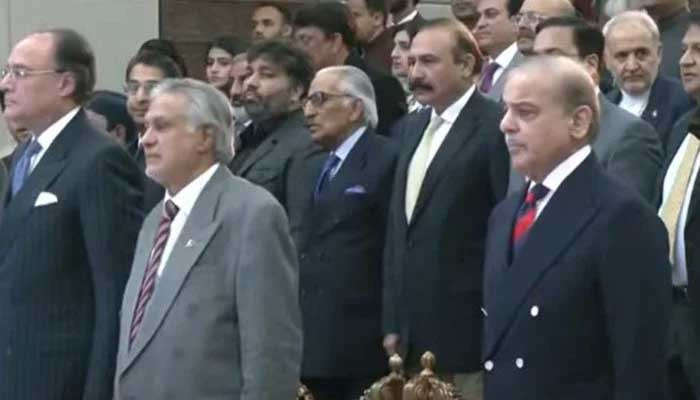Business
National Action Plan at 10: assessing Pakistan’s post-APS response
字号+ Author:Smart News Source:US 2025-01-10 22:10:44 I want to comment(0)
JUST eight days after the APS massacre, political leaders convened to address the collective heartbreak that had Pakistanis demanding real action and real change. Parliament then passed the “National Action Plan (NAP) for Countering Terrorism and Extremism”, consisting of 20 points of varying significance. This NAP aimed to present a comprehensive strategy with a wide range of measures, including improving law enforcement capabilities and intelligence sharing, addressing challenging issues such as sectarian violence and extremism, and countering terrorist propaganda. Ten years after the APS attack, the militant landscape within the country has grown increasingly complex, with terrorism evolving into new and varied forms. This shift raises pressing questions about the current status and effectiveness of the NAP: Has it achieved its objectives in reducing terrorism, or does it require reassessment to address today’s challenges? The National Counter Terrorism Authority (Nacta), founded by ordinance in 2009 and ratified by parliament in 2013, was envisioned as the lead agency for coordinating Pakistan’s counterterrorism efforts. Despite this mandate, Nacta has faced persistent challenges in realising its potential, primarily due to institutional hurdles, budget constraints, and bureaucratic obstacles. NAP’s limited success appears rooted in its implementation rather than its conception. Tariq Parvez, the first national coordinator of the Nacta and a member of the committee that formulated NAP, reveals the policy was hastily crafted to meet a tight deadline set by then-prime minister Nawaz Sharif. “The military operations are credited for reducing terrorism up until 2018,” he says, noting that the NAP itself had no significant impact on the decline of terrorism. While over a dozen ministerial monitoring committees were formed to track the NAP’s implementation, Parvez notes these proved ineffective, with apex committees at federal and provincial levels eventually becoming the primary bodies addressing terrorism issues. Security analysts point to broader structural issues. “Although all major political parties were consulted, it would have been beneficial to include provincial governments and Counter-Terrorism Departments (CTDs) in the formation of the NAP,” says Fakhar Kakakhel. “Each province faces unique security challenges, and their input could have ensured a more comprehensive and contextually relevant plan.” Despite these criticisms, Abdul Basit, Senior Associate Fellow at the S. Rajaratnam School of International Studies in Singapore, sees some value in the initiative: “Whether NAP was successful or failed is another debate. But in Pakistan, a counterterrorism policy was finally instituted and a framework and mechanism were enforced under the Nacta for the first time.” “Nacta’s potential remains largely untapped as it continues to operate in an environment of fragmented inter-agency coordination,” says Parvez. A Nacta official, who spoke on condition of anonymity, revealed that the organisation still lacks provincial offices, sufficient staff, and adequate funding. In the early years following the NAP’s adoption, Pakistan intensified its crackdown on armed and banned groups, targeting their networks, supporters, and financing sources. However, this initial momentum slowed over time due to a combination of inconsistent implementation and shifting state priorities. Experts argue that the list of banned outfits should be streamlined, as many groups rebrand or splinter only to reemerge under new names. “Due to mergers and reabsorptions, the actual number of distinct banned entities may be closer to 50,” says Kakakhel. For instance, the TTP has recently reabsorbed various splinter groups, complicating assessments of banned entities. The government’s counterterrorism efforts have also weakened terrorist financing networks, largely driven by the Financial Action Task Force (FATF)’s pressure. To combat money laundering and terror financing more effectively, a high-tech financial intelligence agency, the Financial Monitoring Unit (FMU), was established in 2017. The FMU specialises in identifying patterns and geographical spread of terror financing, tracking its flow, and coordinating with relevant law enforcement agencies such as counterterrorism departments and the Federal Investigation Authority (FIA). “This effort has focused on tracking and dismantling funding channels that support terrorist groups, preventing banned groups from securing funds domestically, or internationally,” says a Karachi-based CTD official. “By disrupting these financial networks, Pakistan has targeted a critical support system for extremism.” However, experts emphasise that sustaining these gains will require ongoing vigilance and tighter financial oversight to prevent any resurgence. A decade into NAP, the struggle against sectarianism remains a formidable challenge, demanding consistent policy efforts and a strategic shift to address the ideological forces that sustain groups like TLP and foster religious persecution. Efforts to counter this violence, such as Paigham-i-Pakistan, often falter due to the intricate interplay of domestic and geopolitical dynamics. The influence of sectarian groups, particularly their links with actors in the Middle East, continues to exacerbate Pakistan’s internal crises. The NAP also set ambitious goals to limit extremist literature, strictly ban the glorification of terrorists in media, and curb the misuse of the internet and social media by militant groups. Over the past decade, significant progress has been made in shutting down extremist publications such as weekly Zarb-i-Momin and reducing access to hate-promoting content. However, new challenges have arisen in the digital realm. Extremist content has increasingly migrated to less-regulated platforms such as Telegram, with groups like the Islamic State turning to encrypted networks and international channels to bypass restrictions and retain their influence. While social media monitoring has expanded and platforms have adopted stricter content moderation, bad actors continue to adapt, using secure messaging apps, VPNs, and coded language to evade detection. “As long as Telegram and other encrypted social platforms remain accessible, extremist groups, such as the TTP, will continue to utilise these channels to advance their agendas,” says Joshua Bowes, a researcher studying militant groups at the South Asia Foresight Network in Washington, DC. Pakistan has strengthened collaboration with global tech companies to curb extremist content, yet the rapidly evolving digital landscape calls for continuous innovation in counterterrorism strategies to stay ahead of these adaptive threats. Since May, military discussions have adopted the term “digital terrorism”, widely seen as a veiled reference to PTI’s supporters, escalating the crackdown on digital activists linked to the party. Digital freedom in Pakistan has long been constrained. Internet shutdowns are common during religious festivals to curb dissent and prevent unrest. Freedom House ranks Pakistan as “not free,” scoring it 26/100 on internet freedom.
1.This site adheres to industry standards, and any reposted articles will clearly indicate the author and source;
 Related Articles
Related Articles-
Who is expected to be part of Pakistan's Champions Trophy squad?
2025-01-10 21:33
-
نیراج چوپڑا نے بھارتی کھلاڑیوں کو ڈوپنگ سے پرہیز کرنے کی نصیحت کی ہے۔
2025-01-10 20:23
-
نیراج چوپڑا نے بھارتی کھلاڑیوں کو ڈوپنگ سے پرہیز کرنے کی نصیحت کی ہے۔
2025-01-10 20:10
-
امریکی صدر بائیڈن کی صدارتی اعزاز کی تقریب میں لیونل میسی کی عدم شرکت
2025-01-10 19:39
 User Reviews
User Reviews Recommended Reads
Recommended Reads Hot Information
Hot Information- Preparations in full swing as runners look forward to Karachi Marathon
- ویسٹ انڈیز 18 سال بعد ٹیسٹ سیریز کے لیے پاکستان پہنچ گئی۔
- نیراج چوپڑا نے بھارتی کھلاڑیوں کو ڈوپنگ سے پرہیز کرنے کی نصیحت کی ہے۔
- نیراج چوپڑا نے بھارتی کھلاڑیوں کو ڈوپنگ سے پرہیز کرنے کی نصیحت کی ہے۔
- رانا ثناء اللہ نے پاکستان کی اڑان کے لیے معاشی چارٹر کے مطالبے کو دوبارہ پیش کیا
- ویسٹ انڈیز 18 سال بعد ٹیسٹ سیریز کے لیے پاکستان پہنچ گئی۔
- نیراج چوپڑا نے بھارتی کھلاڑیوں کو ڈوپنگ سے پرہیز کرنے کی نصیحت کی ہے۔
- ویسٹ انڈیز 18 سال بعد ٹیسٹ سیریز کے لیے پاکستان پہنچ گئی۔
- Pacers help Pakistan take control as South Africa lose three wickets in 148-run chase
 Abont US
Abont US
Follow our WhatasApp account to stay updated with the latest exciting content













